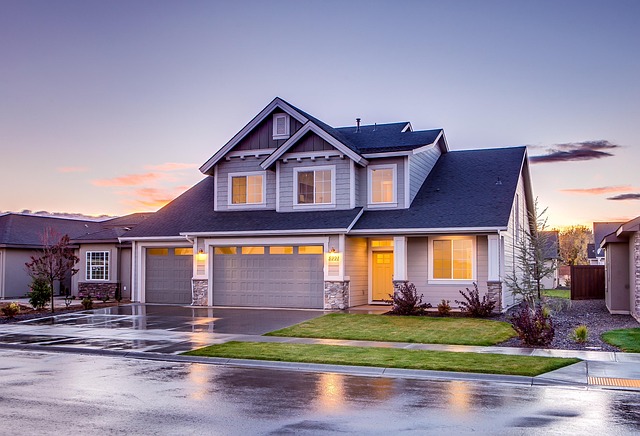Wireless and solar-powered solutions are revolutionizing remote home security. These modern systems, including wireless alarms and long-range cameras, provide efficient protection without complex wiring. Smart home integrations offer real-time alerts and remote access via smartphones, ensuring comprehensive safety for rural properties. Tailored motion sensors handle harsh weather conditions, while solar power ensures environmental sustainability and easy maintenance, aligning with global trends towards eco-friendly practices. Regular updates ensure optimal performance, addressing vulnerabilities in these innovative security solutions.
“In today’s digital era, securing remote locations has become a priority, especially for homeowners seeking peace of mind. Motion-activated wireless alarms offer a revolutionary solution for remote homes, providing robust wireless security and enhanced surveillance. This article delves into the world of remote home security, exploring various systems, including solar-powered options, that cater to diverse needs. We’ll uncover benefits, requirements, tips, and best practices, highlighting the role of long-range wireless cameras and motion sensors in transforming rural area protection while promoting a green revolution.”
- Understanding Wireless Security for Remote Homes: Benefits and Requirements
- Types of Remote Home Security Systems: A Comprehensive Look
- Solar-Powered Solutions: The Green Revolution in Rural Area Protection
- Implementing Smart Home Security for Remote Properties: Tips and Best Practices
Understanding Wireless Security for Remote Homes: Benefits and Requirements

Wireless security systems are transforming remote home protection, offering a modern and efficient approach to safeguarding isolated properties. These innovative solutions, such as wireless alarm systems for rural areas, provide homeowners with enhanced peace of mind by ensuring their remote homes are secure without the need for cumbersome wiring or complex installation processes. One of the key advantages is the flexibility they offer in terms of placement; motion sensors can be strategically positioned to cover every angle, utilizing long-range wireless cameras to monitor activities from afar.
The benefits extend further with options like solar-powered wireless security, which not only reduces maintenance costs but also contributes to environmental sustainability. Smart home security for remote properties leverages technology to provide real-time alerts and remote access, allowing homeowners to keep an eye on their belongings from anywhere in the world. These systems cater to the unique challenges of rural living, ensuring that every corner of a remote home or property is secured with advanced motion sensors and wireless connectivity.
Types of Remote Home Security Systems: A Comprehensive Look

Remote home security systems have evolved significantly, offering a range of options for those seeking to protect their rural or isolated properties. One prominent choice is wireless security for remote homes, which leverages modern technology to provide robust protection without the need for complex wiring. These systems often incorporate motion sensors for remote homes, enabling them to detect and alert homeowners of any unauthorized entries or activities.
For areas with ample sunlight, solar-powered wireless security cameras offer a sustainable solution. They can transmit video feeds over long ranges, providing comprehensive monitoring of peripheral areas. Smart home security for remote properties integrates seamlessly with existing smart home devices, allowing homeowners to control and monitor their security systems remotely via their smartphones or tablets. This real-time connectivity ensures that even when you’re away from your property, you stay connected to its safety.
Solar-Powered Solutions: The Green Revolution in Rural Area Protection

In recent years, there has been a significant shift towards eco-friendly and sustainable solutions for remote home security systems. One such game-changer is the integration of solar-powered wireless security technology. These innovative systems harness the power of the sun to provide long-range wireless cameras and motion sensors for remote homes, ensuring optimal protection without contributing to environmental harm. By adopting solar-powered wireless security, rural areas can benefit from advanced smart home security solutions that are both effective and environmentally conscious.
This green revolution in remote home security systems offers several advantages. Solar energy is abundant, reliable, and renewable, making it an ideal power source for remote locations where traditional electricity grids may be inaccessible. Moreover, these solar-powered alarms can be easily installed, maintained, and monitored remotely, providing a cost-effective and efficient way to secure wireless alarm systems for rural areas. With the growing demand for sustainable practices, this technology not only strengthens security but also aligns with the global shift towards more eco-friendly solutions.
Implementing Smart Home Security for Remote Properties: Tips and Best Practices

Implementing Smart Home Security for Remote Properties: Tips and Best Practices
When it comes to securing remote properties, wireless security systems offer a practical and effective solution. Wireless alarms for remote homes, such as solar-powered models, are ideal for rural areas with limited accessibility. These systems eliminate the need for complex wiring, making installation faster and more cost-effective. Moreover, long-range wireless cameras provide an additional layer of protection by offering remote monitoring capabilities.
For optimal smart home security, consider integrating motion sensors tailored for remote locations. These sensors should be durable enough to withstand harsh weather conditions while maintaining sensitivity to detect even the slightest movement. Regular maintenance and testing are crucial; ensure all devices remain fully charged, especially solar-powered units. Additionally, keep the system updated with the latest firmware to address any security vulnerabilities.
Motion-activated wireless alarms offer a robust and flexible solution for securing remote locations. By leveraging technology such as long-range wireless cameras and sensitive motion sensors, homeowners can protect their properties in rural areas effectively while enjoying the benefits of smart home security. Implementing these systems, especially with solar-powered options, ensures environmental sustainability without compromising safety. Adhering to best practices and considering the specific needs of wireless security for remote homes will enable folks to navigate and safeguard their spaces confidently.
